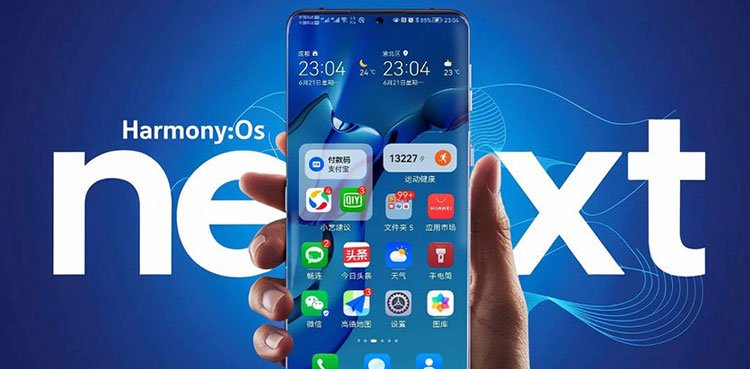HarmonyOS, also known as HongmengOS in China, is a distributed operating system developed by Huawei. It was first announced in August 2019 and officially launched in 2021.
HarmonyOS is designed to work across a wide range of devices, including smartphones, tablets, smartwatches, smart TVs, and other IoT (Internet of Things) devices. Huawei says that the goal of HarmonyOS is to provide a seamless and unified user experience across different types of devices, enabling them to work together more efficiently.
Key Features of HarmonyOS:
- Distributed Architecture: HarmonyOS uses a distributed architecture that allows devices to share resources and capabilities. For example, a smartphone can leverage the camera of a nearby tablet, or a smartwatch can display notifications from a smartphone.
- Microkernel Design: HarmonyOS uses a microkernel design, which is intended to be more secure and efficient compared to traditional monolithic kernels. The microkernel is responsible for only the most basic functions, while other services run in user space, reducing the risk of system crashes and security vulnerabilities.
- Cross-Device Compatibility: HarmonyOS is designed to be compatible with a wide range of devices, from small IoT devices to large smart TVs. This allows for a more integrated ecosystem where devices can easily communicate and work together.
- Adaptive UX: HarmonyOS offers an adaptive user interface that can adjust to different screen sizes and form factors, providing a consistent experience across devices.
- App Ecosystem: HarmonyOS supports apps developed for Android (via the Android Open Source Project, AOSP), but it also encourages developers to create native apps optimized for HarmonyOS. This allows for a smoother transition for users and developers from Android to HarmonyOS.
HarmonyOS vs. Android:
Whether HarmonyOS is “better” than Android depends on the context and specific use cases. Here are some points of comparison:
- Ecosystem Integration: HarmonyOS is designed with a strong focus on cross-device integration, which could offer a more seamless experience for users who own multiple Huawei devices. Android, while also supporting a wide range of devices, is more fragmented due to the variety of manufacturers and customizations.
- Security: HarmonyOS’s microkernel design is theoretically more secure than Android’s monolithic kernel, as it reduces the attack surface. However, the actual security also depends on implementation and ongoing updates.
- App Availability: Android has a much larger app ecosystem, with millions of apps available on the Google Play Store. HarmonyOS is still growing its app ecosystem, and while it can run Android apps, the experience may not be as optimized as native HarmonyOS apps.
- Customization: Android is known for its high level of customization, both for users and manufacturers. HarmonyOS, while flexible, may not offer the same level of customization, especially since it is tightly controlled by Huawei.
- Global Reach: Android is the most widely used mobile operating system globally, with support from a vast number of manufacturers and developers. HarmonyOS is still relatively new and is primarily used in Huawei devices, limiting its global reach compared to Android.




